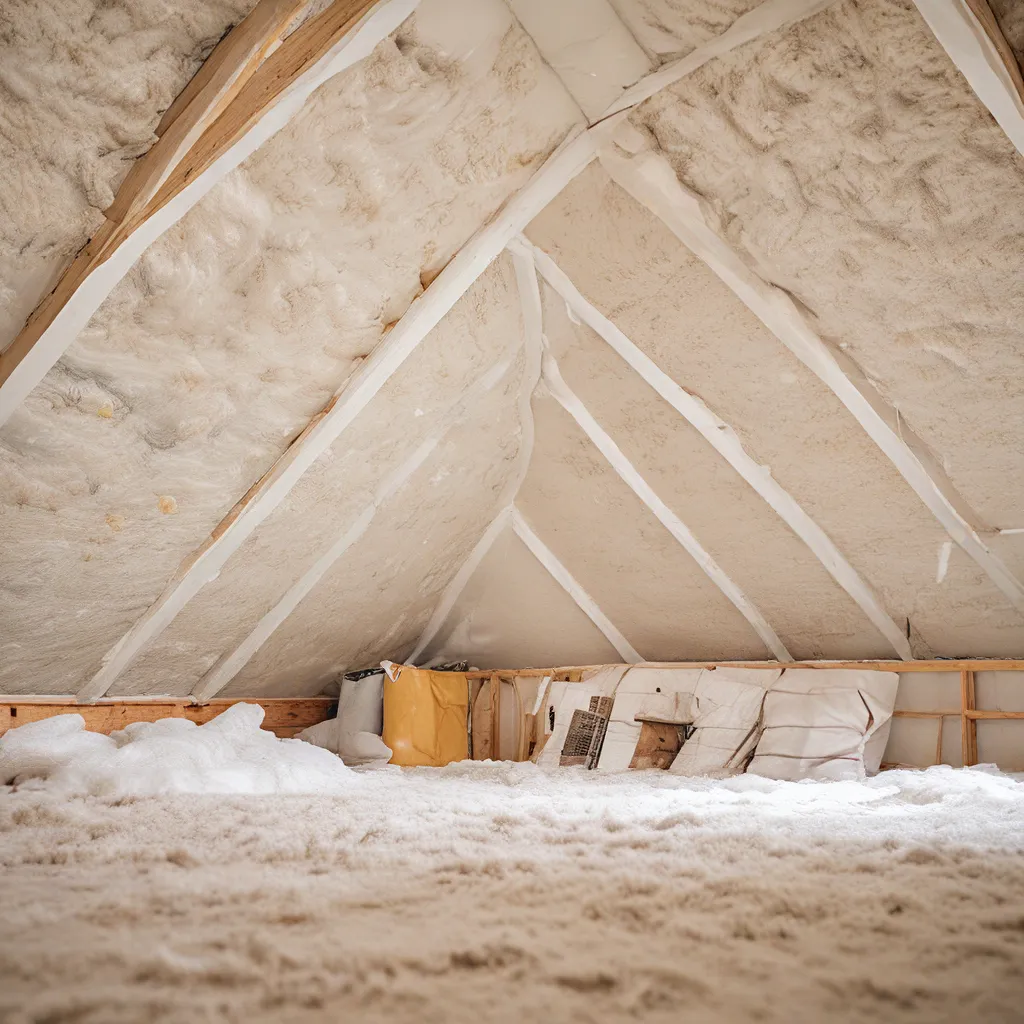
The Sweater Your Home Needs
You know that feeling when you slip on your favorite, well-worn sweater on a chilly day? It’s like a warm embrace, shielding you from the elements and keeping you toasty no matter how blustery it gets outside. Well, as the proud owner of Plug N’ Save Energy Products, I’m here to tell you that your home deserves that same level of cozy protection – and insulation is the key.
Think of it this way – your home’s insulation is like the sweater it wears to stay comfortable year-round. When the mercury drops, a well-insulated home traps warm air inside, preventing it from escaping through those pesky walls, ceilings, and floors. And in the scorching summer months, insulation acts as a cool, shaded hat, keeping the blistering heat at bay and making your living space a refreshing oasis.
The Power of Insulation
I’ve been in the insulation game for years, and let me tell you, the impact it can have on your energy bills is nothing short of magical. Proper insulation acts as a barrier, slowing the transfer of heat and cold between the inside and outside of your home. This means your heating and cooling systems don’t have to work as hard to maintain your desired temperature, saving you a ton of money in the long run.
In fact, the U.S. Department of Energy estimates that you can save up to 15% on your heating and cooling costs by properly insulating your home. And when you consider that heating and cooling account for a whopping 54% of the average household’s energy use, that’s a pretty substantial chunk of change you’ll be keeping in your pocket.
But the benefits of insulation don’t stop there. By reducing your energy consumption, you’re also doing your part to minimize your carbon footprint and protect the environment. After all, the less energy your home requires, the fewer greenhouse gas emissions are pumped into the atmosphere. It’s a win-win for both your wallet and the planet!
Finding the Right Insulation for Your Home
Now, I know what you’re thinking – “Okay, Zach, you’ve convinced me. But how do I know what type of insulation is best for my home?” Well, my friend, that’s where my expertise comes in.
There are a few key factors to consider when choosing the right insulation:
R-Value
The R-value is a measure of an insulation material’s ability to resist heat flow. The higher the R-value, the better the insulation. Depending on your climate and the area of your home you’re insulating, you’ll want to target a specific R-value range.
Material Type
The most common insulation materials are fiberglass, cellulose, and spray foam. Each has its own unique advantages and disadvantages in terms of cost, ease of installation, and environmental impact.
Installation Location
Where you install the insulation – in the attic, walls, or crawl spaces – can also impact the type of insulation you should use. Different materials perform better in different areas of the home.
To make sure you get the perfect insulation solution for your needs, I always recommend consulting with a professional insulation contractor. They can assess your home, provide personalized recommendations, and ensure the installation is done right the first time.
The Eco-Friendly Insulation Advantage
Now, I know what you’re probably thinking – “Zach, insulation sounds great and all, but what about the environmental impact?” Well, my friends, I’m happy to report that there are plenty of eco-friendly insulation options out there that can help you reduce your carbon footprint without sacrificing comfort or energy savings.
Insulation is like your home’s temperature control system – it helps regulate the indoor climate, keeping the warm air in during winter and the hot air out in summer. This means your heating and cooling systems don’t have to work as hard, which in turn reduces your energy consumption and greenhouse gas emissions.
But that’s not all. Many modern insulation materials, like recycled cellulose or soy-based foam, are made from sustainable, renewable resources. These eco-friendly alternatives not only perform just as well as traditional insulation, but they also have a significantly lower environmental impact throughout their entire lifecycle.
So, by investing in high-quality, energy-efficient insulation, you’re not only saving money on your utility bills, but you’re also making a tangible difference in the fight against climate change. It’s a no-brainer, really.
The Insulation Transformation
I’ll never forget the first time I saw the difference insulation made in a home. It was during one of my early years in the business, and I was working on a project for a family in a chilly, drafty old farmhouse. The place was like a sieve, letting all the warm air out and the cold air in.
But after we installed the new insulation, the transformation was nothing short of remarkable. The once-frigid rooms were now cozy and comfortable, and the homeowners’ energy bills actually dropped by nearly 20%. They were thrilled, and so was I – it was like magic.
Since then, I’ve seen the incredible impact of insulation time and time again. It’s the unsung hero of the home, quietly working behind the scenes to keep your living space comfortable and your wallet happy. And with so many eco-friendly options available, there’s really no excuse not to give your home the insulation upgrade it deserves.
So, what are you waiting for? Take that first step towards a cozier, more energy-efficient home, and let insulation be the sweater that keeps you and the planet warm for years to come.